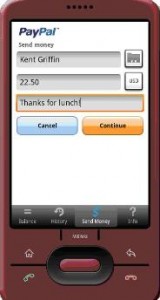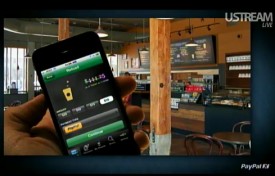PayPal Will Test Several Payment Systems at Retail This Year
PayPal will conduct several pilot programs over the next year to test how consumers will use their PayPal accounts–at the register.
 The eBay-owned company announced the pilots last week at its analyst day, and we followed up with PayPal’s president, Scott Thompson, to find out what the company has in store.
The eBay-owned company announced the pilots last week at its analyst day, and we followed up with PayPal’s president, Scott Thompson, to find out what the company has in store.
Thompson said the program will target the “everyday spend category,” meaning large merchants that specialize in groceries, gas and other broad categories.
To be sure, PayPal, which is on track to become bigger than eBay over the next few years, is quickly expanding as it sees opportunities in mobile and other alternative payment options.
So far, it has been more focused on becoming an online and mobile payment platform for virtual and digital goods, including the ability for customers to pay for small and inexpensive items without leaving an app or Web site.
In terms of physical payments, however, PayPal’s experiments have consisted of a partnership with Bling Nation that allows users to adhere a sticker to their mobile phone to pay for in-store items using a PayPal account.
 Thompson said the partnership was a good test, but it was mostly focused on small merchants and wasn’t going to get mass adoption.
Thompson said the partnership was a good test, but it was mostly focused on small merchants and wasn’t going to get mass adoption.
For the trials this year, Thompson wouldn’t disclose what technology the company will be using, but he promises it won’t require swapping out expensive point-of-sale machines.
“Anytime there’s a real-time network and it is online, it’s addressable by us,” he said. “We’ll address it with software.”
He said PayPal is technology-agnostic, which is perfect for today’s world of different views and different standards. “If there were common standards, there would be no need for PayPal. With all of the competing standards, and our ability to run above them, we have the opportunity to win over the next three to five years.”
Thompson said the solution won’t require issuing plastic cards to customers, which is inherently not secure because they can be lost, or overcharged. “The future is pushing money to the merchant vs. the merchant pulling money from your bank account.”
The pilots will include using a couple of different techniques to find out what customers like.
Any way you slice it, the opportunity in front of it is enormous (and uncertain).
 In 2010, PayPal’s mobile revenues totaled $750 million, and is forecasting for the segment to grow tenfold over the next three years. He says if PayPal is able to get just one percent of retail sales, it will be able to double the size of its business.
In 2010, PayPal’s mobile revenues totaled $750 million, and is forecasting for the segment to grow tenfold over the next three years. He says if PayPal is able to get just one percent of retail sales, it will be able to double the size of its business.
PayPal is not the only one fighting to be at the checkout. Other payment providers, such as Visa and MasterCard will be there, along with other start-ups, such as ISIS, the wireless-carrier-led initiative in the U.S.
Don’t confuse this with how companies, like Zong and Boku, are trying to enable consumers to charge some higher-margin physical goods to their carrier bill. That goes after only a small segment of payments, whereas PayPal is aiming for the everyday stuff.








